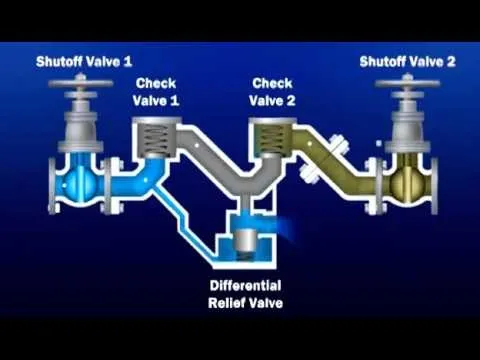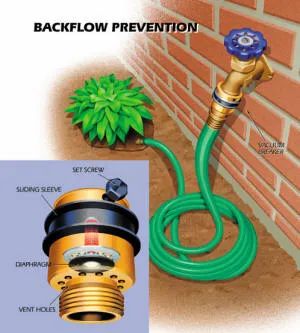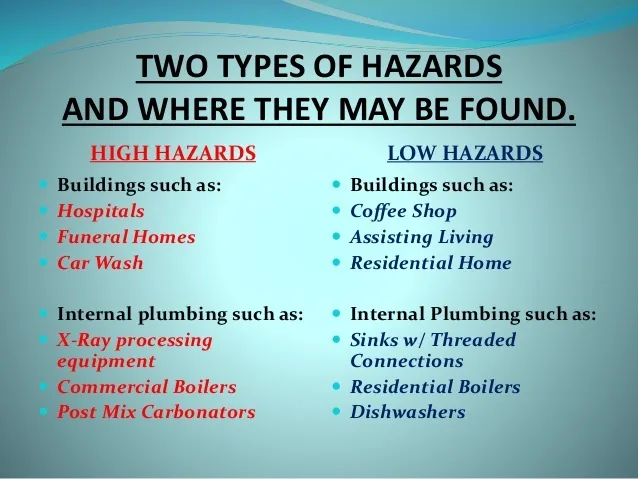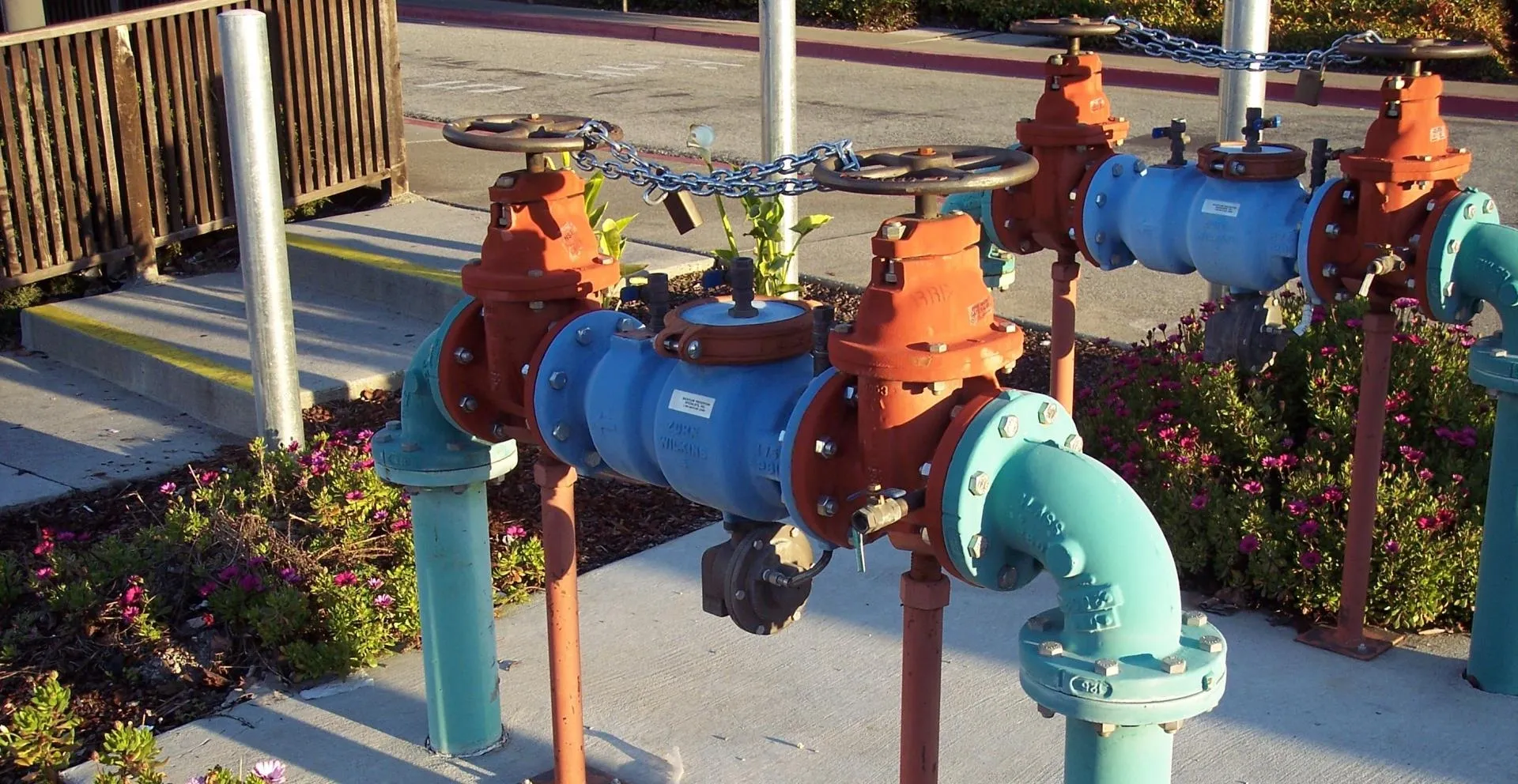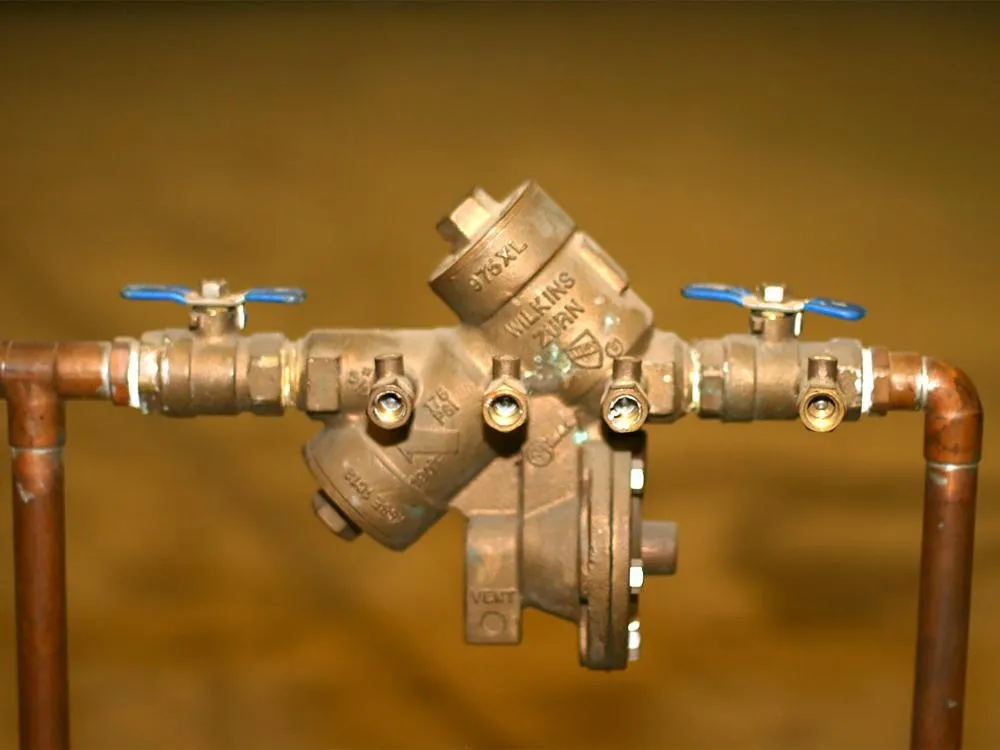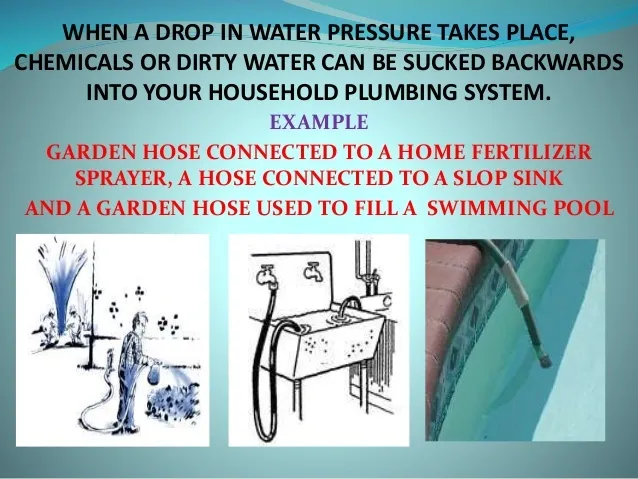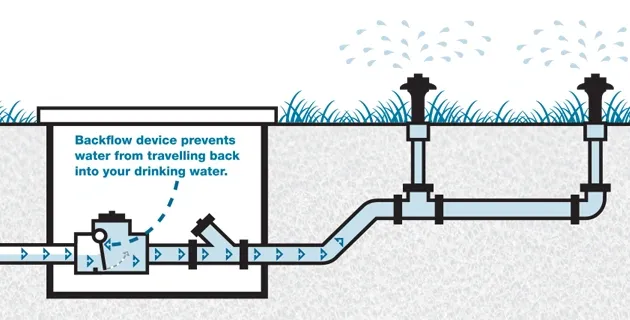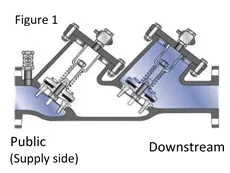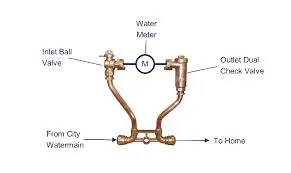Cross-Connection Control
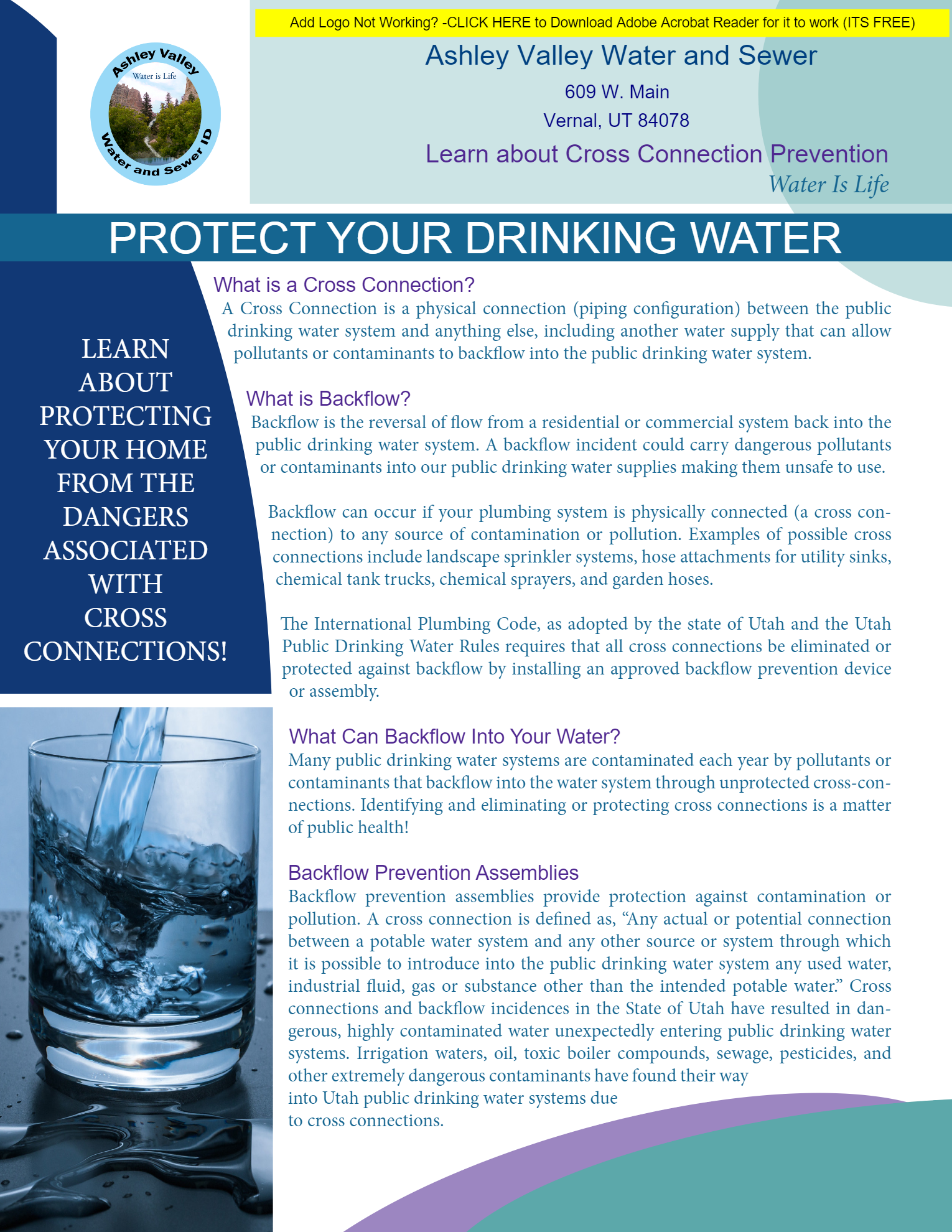
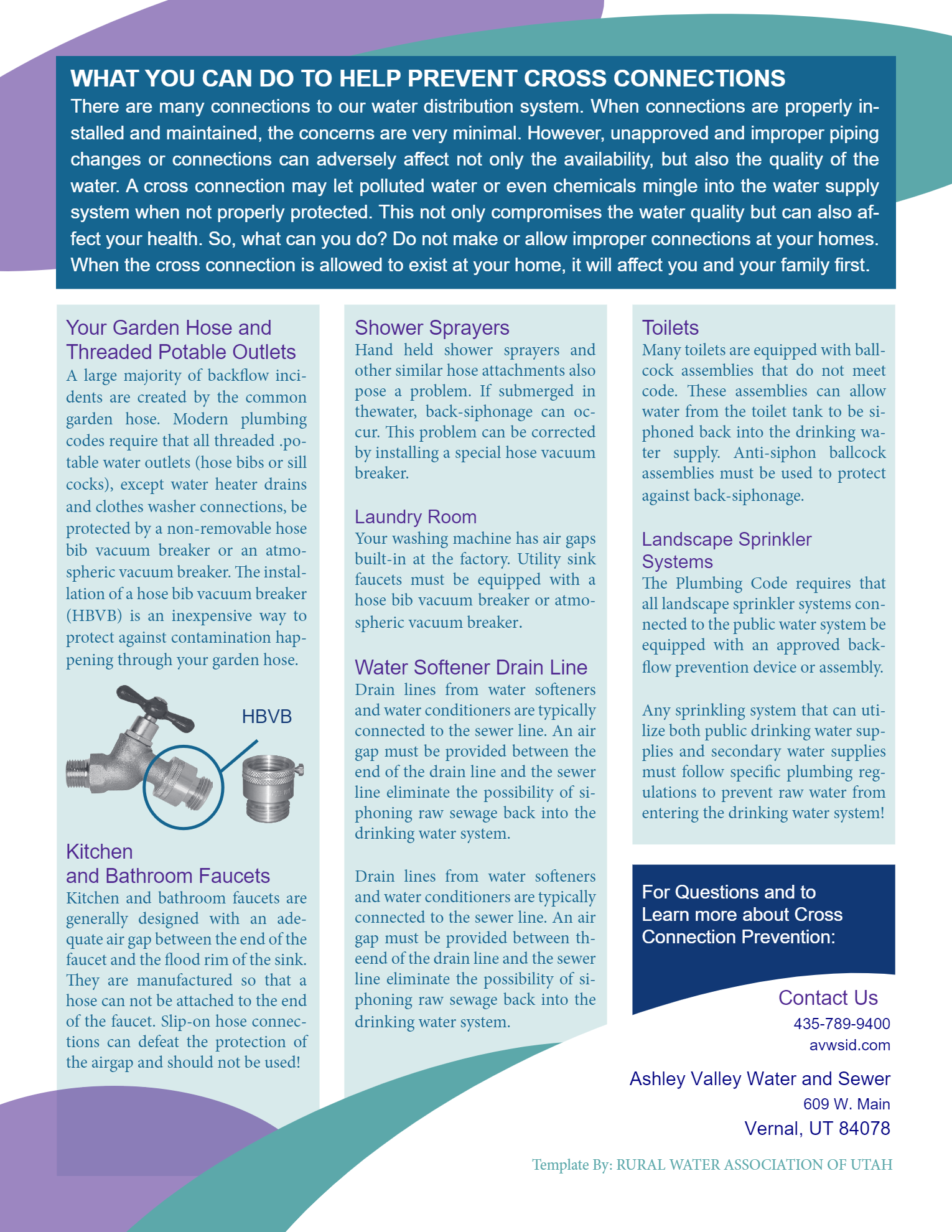


Learn about Cross Connection Prevention
Water Is Life
Protect Your Drinking Water:
Learn About Protecting Your Home From The Dangers Associated With Cross Connections!
A Cross Connection is a physical connection (piping configuration) between the public drinking water system and anything else, including another water supply that can allow pollutants or contaminants to backflow into the public drinking water system.
Backflow is the reversal of flow from a residential or commercial system back into the public drinking water system. A backflow incident could carry dangerous pollutants or contaminants into our public drinking water supplies making them unsafe to use.
Backflow can occur if your plumbing system is physically connected (a cross con- nection) to any source of contamination or pollution. Examples of possible cross connections include landscape sprinkler systems, hose attachments for utility sinks, chemical tank trucks, chemical sprayers, and garden hoses.
The International Plumbing Code, as adopted by the state of Utah and the Utah Public Drinking Water Rules requires that all cross connections be eliminated or protected against backflow by installing an approved backflow prevention device or assembly.
Many public drinking water systems are contaminated each year by pollutants or contaminants that backflow into the water system through unprotected cross-con- nections. Identifying and eliminating or protecting cross connections is a matter of public health!
Backflow prevention assemblies provide protection against contamination or pollution. A cross connection is defined as, “Any actual or potential connection between a potable water system and any other source or system through which it is possible to introduce into the public drinking water system any used water, industrial fluid, gas or substance other than the intended potable water.” Cross connections and backflow incidences in the State of Utah have resulted in dan- gerous, highly contaminated water unexpectedly entering public drinking water systems. Irrigation waters, oil, toxic boiler compounds, sewage, pesticides, and other extremely dangerous contaminants have found their way into Utah public drinking water systems due to cross connections.
What You Can Do To Help Prevent Cross Connections
There are many connections to our water distribution system. When connections are properly in- stalled and maintained, the concerns are very minimal. However, unapproved and improper piping changes or connections can adversely affect not only the availability, but also the quality of the water. A cross connection may let polluted water or even chemicals mingle into the water supply system when not properly protected. This not only compromises the water quality but can also af- fect your health. So, what can you do? Do not make or allow improper connections at your homes. When the cross connection is allowed to exist at your home, it will affect you and your family first.
A large majority of backflow inci- dents are created by the common garden hose. Modern plumbing codes require that all threaded .po- table water outlets (hose bibs or sill cocks), except water heater drains and clothes washer connections, be protected by a non-removable hose bib vacuum breaker or an atmo- spheric vacuum breaker. The instal- lation of a hose bib vacuum breaker (HBVB) is an inexpensive way to protect against contamination hap- pening through your garden hose.
Kitchen and bathroom faucets are generally designed with an ade- quate air gap between the end of the faucet and the flood rim of the sink. They are manufactured so that a hose can not be attached to the end of the faucet. Slip-on hose connec- tions can defeat the protection of the airgap and should not be used!
Hand held shower sprayers and other similar hose attachments also pose a problem. If submerged in thewater, back-siphonage can oc- cur. This problem can be corrected by installing a special hose vacuum breaker.
Your washing machine has air gaps built-in at the factory. Utility sink faucets must be equipped with a hose bib vacuum breaker or atmo- spheric vacuum breaker.
Drain lines from water softeners and water conditioners are typically connected to the sewer line. An air gap must be provided between the end of the drain line and the sewer line eliminate the possibility of si- phoning raw sewage back into the drinking water system.
Many toilets are equipped with ball- cock assemblies that do not meet code. These assemblies can allow water from the toilet tank to be si- phoned back into the drinking wa- ter supply. Anti-siphon ballcock assemblies must be used to protect against back-siphonage.
The Plumbing Code requires that all landscape sprinkler systems con- nected to the public water system be equipped with an approved back- flow prevention device or assembly.
Any sprinkling system that can uti- lize both public drinking water sup- plies and secondary water supplies must follow specific plumbing reg- ulations to prevent raw water from entering the drinking water system!
For Questions and to Learn more about Cross Connection Prevention:
Contact Us
435-789-9400
avwsid.com
Ashley Valley Water and Sewer
609 W. Main Vernal, UT 84078
Cross-Connection Control Q&A
Watts Public EducationBackflow & Cross Connection Rules, Policies, and Regulations
